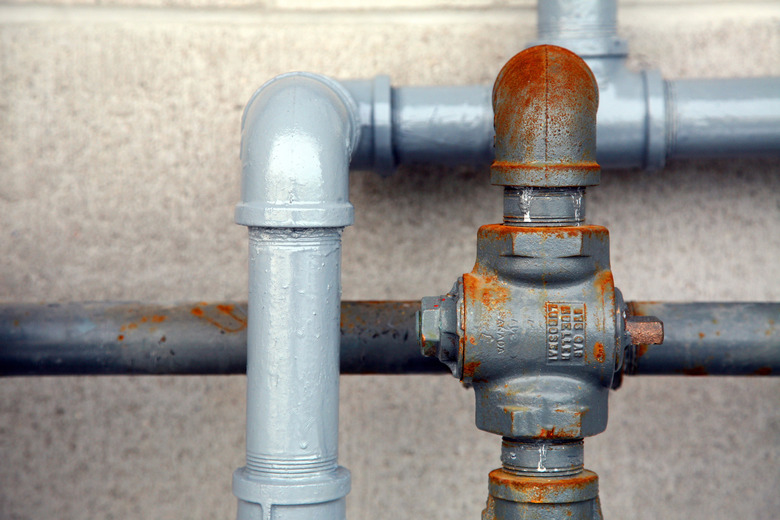Why Do I Get Air Hissing In My Water Pipes?
Besides being annoying to listen to, hissing sounds emanating from water pipes are signs of water leaks. Find the location of the sound and repair the pipes as needed to avoid flushing what could be thousands of gallons of water downstream.
Have a hissing noise in your pipes? Here's what to know and how to act — fast.
Why Is There a Hissing Noise in the Pipes?
Why Is There a Hissing Noise in the Pipes?
A hissing noise in water pipes means there's a leak somewhere, which should be located and repaired before it gets worse.
Hissing or whooshing sounds are indicative of water leaks in pipes. Listening for such sounds is the best way to determine if pipes are leaking. The hissing can sound like constant static noise and is the only type of sound you will hear when dealing with pipes featuring 30 psi or higher water pressure.
Other water pipe noises, such as splashing, beating, thumping or clinking, may accompany hissing and whooshing sounds depending on pipe material and other factors, though they are usually not as loud. Although some of these noises may initially be harmless, the force of the water against the pipes causing the noise may lead to leaks.
Reasons for a Hissing Noise
Reasons for a Hissing Noise
Numerous factors influence hissing and other sounds of leaking water pipes, such as the water pressure inside a pipe. Other factors include the following:
- The type of pipe material used. For example, metal pipes, such as those made from iron, steel or copper, all create louder, higher-frequency noises than do pipes made of PVC or asbestos.
- Pipe diameter. Smaller pipes can cause louder sounds than larger pipes.
- The type of soil used over piping. Sandy and very loose soils do not transmit sound well, particularly if over newly buried pipelines. High-moisture soils, such as those in swamps, transmit sound poorly. Hard, compacted soil transmits sound the best.
- What the pipe is buried under. Whether the pipe is buried under grass, asphalt, loose dirt or concrete slab is the final factor. Grass and dirt feature surface variations that make sound transmission difficult, while concrete and asphalt provide surfaces for sound that resonate well.
How to Pinpoint a Hissing Noise in the Pipes
How to Pinpoint a Hissing Noise in the Pipes
Pinpointing the hissing sound for repair requires finding the location of the pipes on the street with a pipe and cable locator and then marking the location. The sound is generally loudest in piping between the valve or hydrant. It is the second-loudest section of line you must mark, however. Use a ground microphone to locate this spot exactly. Hire a professional to fix or replace the piping if needed.
Why You Should Fix Water Leaks Right Away
Why You Should Fix Water Leaks Right Away
It is important to fix water leaks for water conservation purposes as well as lowering your water bill. For example, a 1/8-inch hole in a 40 psi metal pipe leaks 2,500 gallons of water in 24 hours. A leaking toilet can use as much as 90,000 gallons of water in a month.
Watch for leaks by being aware of the signs and symptoms of leaky pipes, and wrap exposed pipes during cold weather to avoid breakage. Check your sinks for drips and your toilets for leaks and replace old appliances as needed with energy-efficient models.
